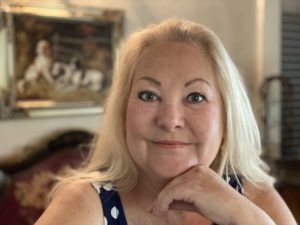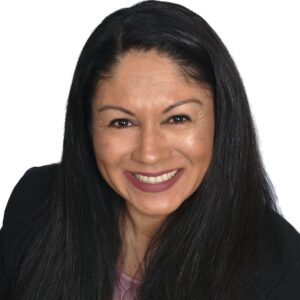Managing Alzheimer’s in the Green House
The Green House is certainly not a new concept anymore-there are now some 56 such homes on 18 sites in 14 states, with a further 100 being developed in 24 states. And, after various iterations, the model seems to have settled on a 10-bedroom “house,” with the bedrooms surrounding a central kitchen and living room staffed by the oddly named shahbazim (direct caregiver staff), standard staffing being two during the day, two in the evening and one overnight, with a full-time nurse covering two houses.
What is new, though, is the professional challenge to administrators who are considering developing Green Houses on their campuses and wondering how running these will compare with running the traditional, large (circa 100-bed) skilled nursing facilities they’re used to. Many administrators involved with these sites are, in fact, running both models, and describe the role as “schizophrenic.” But they do so happily. There are rewards for the administrator who can adapt, they said, and even benefits redounding to their traditional facilities, especially those in the throes of culture change.
Take Wes Wells, for instance, administrator of two Green House homes and a 52-bed Alzheimer’s facility, as well as assistant administrator of a 150-bed skilled nursing facility on the campus of Baptist Memorial Ministries in San Angelo, Texas. “No offense to anyone, but I’d say The Green Houses are the least of my worries. After the first six months of growing pains, they’ve become the most self-sufficient of the settings I manage. The buck still stops here, of course, but the people problems of staff come up less often on the Green House side. I feel that, on the traditional side, people come to me only when they have problems-interpersonal issues with staff, families, roommates, and so forth; I’m doing more fireman work. The Green House shahbaz tend to step up and solve problems on their own, and instead often come to me with positive stories: ‘You should have seen X,’ type of thing. I also get to know staff better at a personal level.”
Question of balance
Lisa Maxwell, his Green House counterpart at the Presbyterian Village of Michigan in Redford, Michigan, agrees. She, too, “schizophrenically” administers two Green House homes plus a 68-bed traditional facility. The Green House staff work much less hierarchically and have more intensive, all-day interaction with the residents, including cooking, light housekeeping, and keeping residents company throughout the day, she notes, adding that her challenge is to balance her administration of the staffs in the two settings.
“I try to be evenhanded and fair,” explains Maxwell. “Basically, these are the same kinds of people on both staffs, with the same motivation-I’d say 99.98% of staff who work in skilled care settings have a calling, and that this is what they choose to do. It’s just that on the traditional side, the structure is still there and I have to be very delicate and cognizant of acknowledging staff’s direct report supervisors when I get involved. Also, the infrastructure in the traditional setting is still very medicalized-long corridors, big nursing stations, people waiting in lines for activities-something you don’t see in the Green House.”
Understanding roles
Both Wells and Maxwell and, in fact, all who serve in administrative roles in Green Houses are described as “guides” and “coaches,” not hierarchical “leaders,” notes Anna Ortigara, RN, MS, a long-experienced long-term care nurse and Associate Director of Long Term Care Accreditation at the Joint Commission for years before assuming her current position as Director of Communication and Outreach for The Green House Project. “The goal for administration is to support a self-managing staff,” she says.
Sometimes staff can be a little too self-managing for the comfort of professional staff. Says Wells: “You have to train professional staff from time to time to accept that the role of the Green House shahbaz is to serve as resident advocates. They’re encouraged and empowered to provide information about residents when needed. While they obviously don’t answer nursing-related questions, you can pretty much get 90% of the information you need from the shahbaz; they know the residents best.”
“Other than clinical responsibilities, the nurse is not the manager of the house,” adds Ortigara, herself an advanced practice nurse. “Some nurses are OK with that and some aren’t. Nurses go into long-term care because they want to work with residents and serve as gerontological experts, care role models, care team partners, mentors, and teachers. Still, they have been held accountable for management of care units in traditional nursing homes, and adjusting to the Green House role can be a challenge.”
For some traditional staff, the adjustment from one setting to the other can be more than challenging-it might just be impossible. “We had flexible getting-up times we imported from the Green House,” says Wells, “but that just went away recently in the traditional facility. Staff was concerned that people weren’t eating properly, even when we kept the dining service open two-and-a-half hours per sitting. Either meals were missed or chasing down food was a major hassle.”
‘Fighting the dragon’
Wells touches on the central difficulty traditionally trained and experienced administrators have when contemplating the Green House model. Centrally organized getting-up times, feeding times, bathing times, and activities can easily be viewed as necessary in the large facility, if only to make sure that these key tasks get done. The Green House models attack the centralizing impulse-it’s called “fighting the dragon,” in Green House terminology-but the transition can be challenging.
“You just have to take what you can,” says Wells. Despite the getting-up time setback, he says his larger facilities remain on the road to culture change inspired in large part by their Green House neighbors. “You do have to be subtle about it,” he notes. “You can’t always be saying ‘Green House this’ and ‘Green House that’ because human nature is to rebel against that sort of thing. Sometimes you have to compromise-when skin specialists come in to do their rounds early in the morning, you have to say we’re lucky to have these people here and we have to get the residents up on time. Basically, though, if you focus generally on person-centered care, you’re bound to come up with something that is so much more than what we have now.”
One major Green House-inspired change has already occurred in his traditional facilities, Wells says. “Our 52-bed facility has two pods-one for early-to-moderate Alzheimer’s and one for late-stage Alzheimer’s. We used to transfer residents routinely from one to the other, as determined by their stage. But the Green House philosophy is that no resident should be transferred from his or her ‘home,’ and that’s what we’ve decided to do-no more transfers. It’s not been easy, even with consistent assignment in these pods, but we think that it’s working best for the residents.”
Ortigara notes specific benefits of this approach: “Because staff have very close and consistent relationships with residents with Alzheimer’s, we are seeing such improvements as residents calming down, doing more independent eating, more independent ambulation, and so forth. What’s more, the residents, living so closely with one another, look out for each other and try to make sure that people stay safe. At the same time, with individual TVs and private bathrooms in their rooms, they’re able to withdraw and have private time when they wish.”
“In general,” she concludes, “the Green Houses are doing things we have tried to do forever in nursing homes. And residents are living more normal lives because of it.”
For more information, contact Anna Ortigara at aortigara@ncbcapitalimpact.org, phone (877) 307-2239 or visit https://www.thegreenhouseproject.org. Contact Lisa Maxwell at lmaxwell@pvm.org or (313) 541-6418, and Wes Wells at wes@bapmem.com or (325) 486-3701. The Green House® Project is a program of NCB Capital Impact and the replication initiative is funded by the Robert Wood Johnson Foundation. To send your comments to the editor, e-mail mhrehocik@iadvanceseniorcare.com.

Richard L. Peck was editor in chief of I Advance Senior Care / Long-Term Living for 18 years. For eight years previous to that, he served as editor of the clinical magazine Geriatrics. He has written extensively on developments in the field of senior care and housing.
Related Articles
Topics: Alzheimer's/Dementia , Articles











